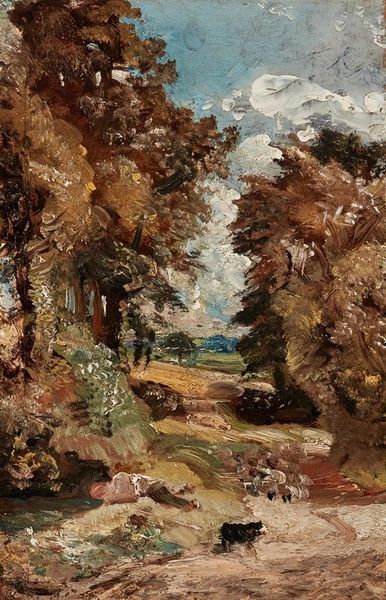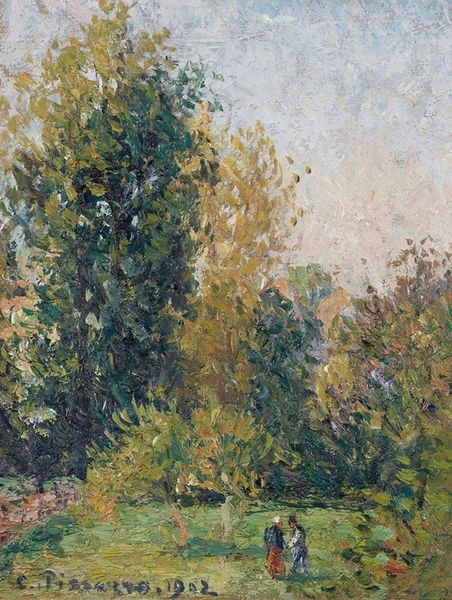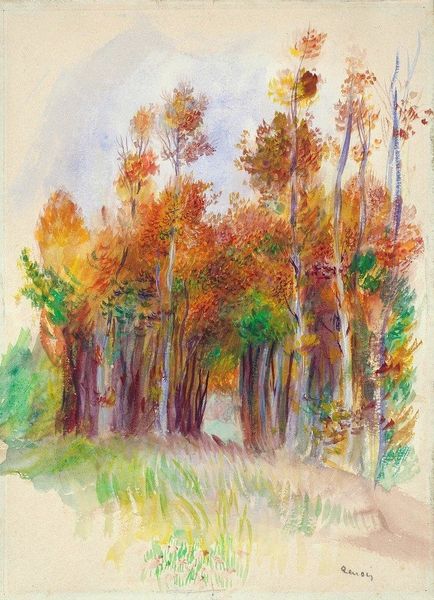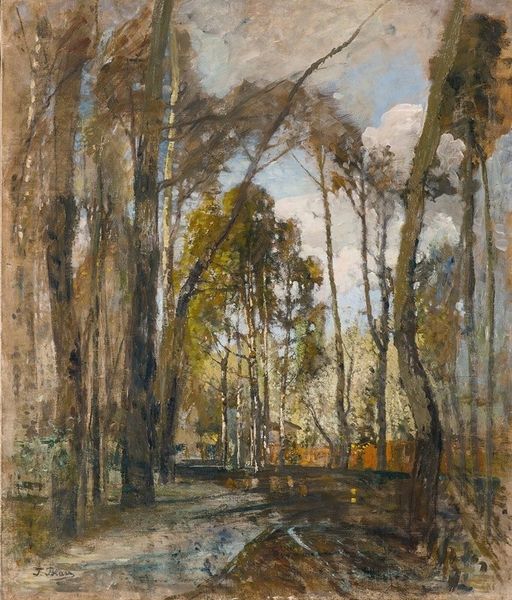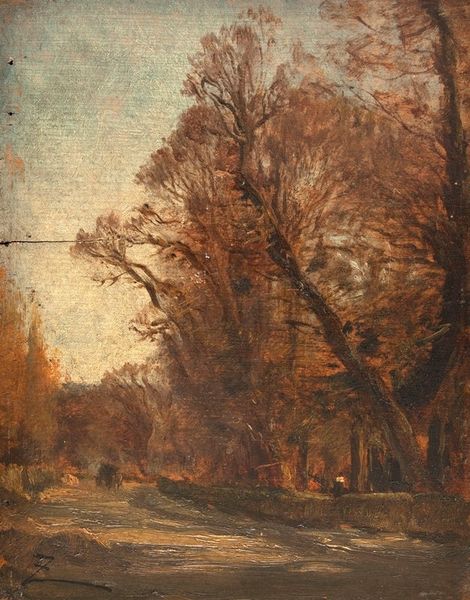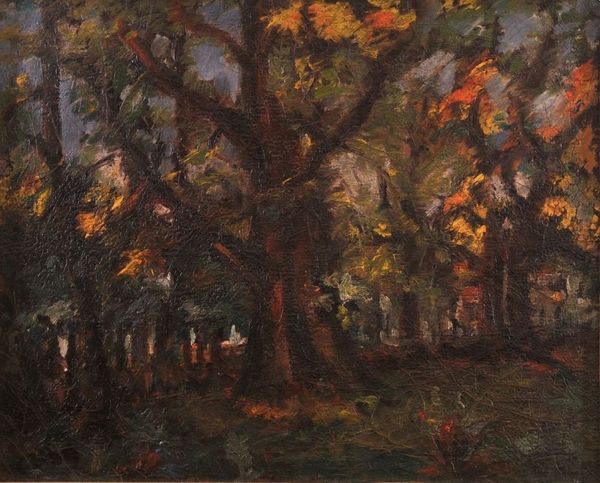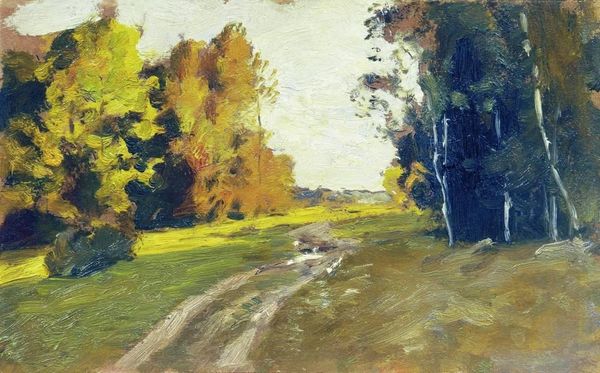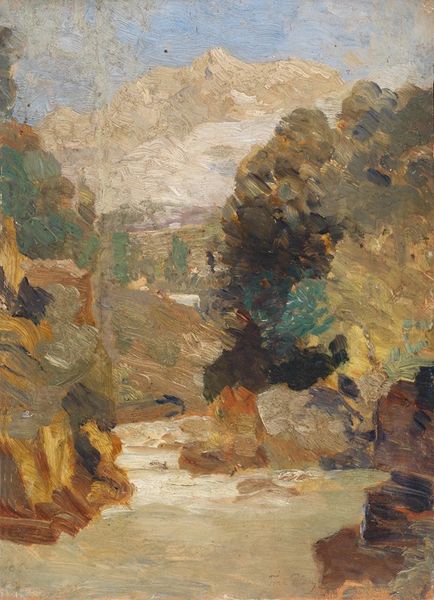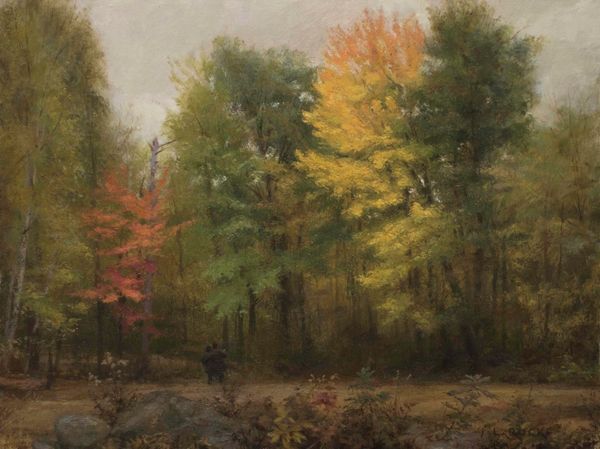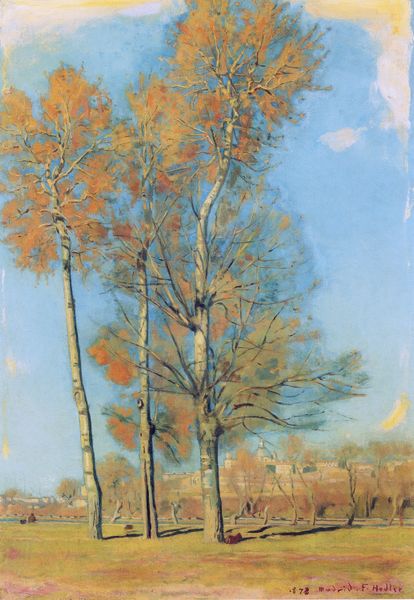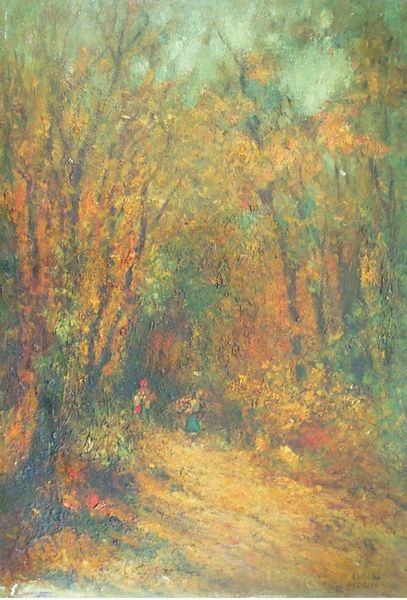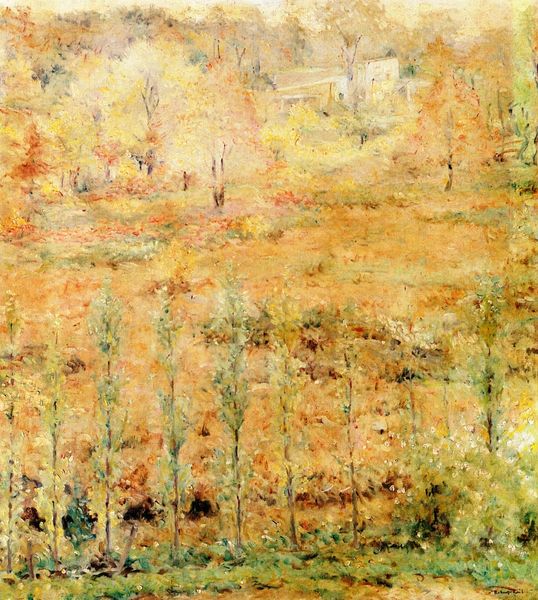
painting, plein-air, oil-paint
#
painting
#
impressionism
#
plein-air
#
oil-paint
#
landscape
#
nature
#
oil painting
Copyright: Public Domain: Artvee
Editor: Here we have Tina Blau's "Kleiner Prater," an oil painting in the Impressionist style. It evokes a sense of serene solitude; a woman strolls along a path enveloped by towering trees. What strikes you most about this piece? Curator: What captivates me is how Blau positions the lone female figure within the landscape. Think about the context – late 19th century Vienna. Did Blau's identity as a woman artist influence her perspective, specifically her representation of women in outdoor settings? Is this woman walking into the future, perhaps a metaphor for Blau herself and other women artists claiming their space? Editor: That's a fascinating reading. I hadn't considered it that way. So, the landscape isn't just a backdrop, but a space loaded with social and gender implications? Curator: Precisely. Impressionism often celebrated modern life, but whose "modern life" was being celebrated? Were women afforded the same freedom of movement and experience as men? Blau gives us pause to reflect on those power dynamics. Also, consider the 'plein-air' technique. The act of painting outdoors was itself a form of claiming space, particularly for women artists often confined to domestic spheres. Editor: So, it's not simply a pretty scene, but a quiet statement about the artist's experience and the societal context of the time. I see now that the woman almost blends into the surrounding scenery. Is it about the relationship between nature and a person? Curator: Indeed, consider how that figure and use of the open space, that might reflect on agency of people during that era and her status in this painting in a specific timeframe. Perhaps, Blau, using the open air and painting from life, sought to rewrite or inscribe woman’s presence in the artistic movements, to make her not just visible, but a part of a historical dialogue, she seeks the spotlight, to paint not what exists, but what should be, an inclusive movement of arts and equality. Editor: I really appreciate your perspective. It’s helped me to see beyond the surface of the painting and think about the social context it emerges from. Curator: And I appreciate your engagement. Looking at art through an intersectional lens enriches our understanding and helps us to connect the past to the present.
Comments
No comments
Be the first to comment and join the conversation on the ultimate creative platform.
